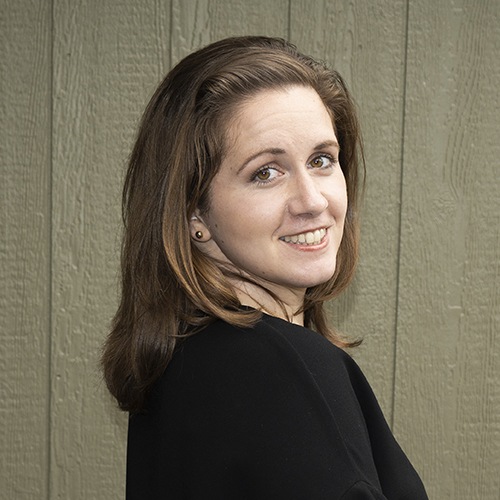3 Things You Can Do To Combat the ‘Broken Rung’

People often talk about the “glass ceiling, ”but the concept of the “broken rung” should receive equal attention as the biggest obstacle women face on the path to a leadership and management position.
A 2019 study from McKinsey & Company found, “For every 100 men promoted and hired to manager, only 72 women are promoted and hired,” and “men end up holding 62% of manager-level positions, while women hold just 38%.”
It is no secret that the broken rung exists in the tech industry, but there are companies that are actively working to improve gender diversity across all levels in their workplace.
The Mass Technology Leadership Council (MassTLC) Professional Women’s Group recently hosted a conversation among a panel of talent experts across Massachusetts to address the question on how to cultivate an inclusive culture in the workplace and combat the broken rung.

From left to right: Addie Swartz, Cara Antonacci, Katie Kulikoski and Deb Carter.
Progress’ own Chief People Officer, Katie Kulikoski, joined the discussion alongside Cara Antonacci, vice president of human resources at Everbridge; Deb Carter, digital talent transformation at Raytheon Technologies; and Addie Swartz, CEO of ReacHIRE, who moderated the panel.
Each leader spoke about the transformational work their teams have undertaken to improve gender equality across their organizations. It was an important conversation to have, and many companies, inside and outside the tech industry, can benefit from these best practices.
1. Senior Leadership Buy-In
When building an inclusive environment that empowers future leaders and disrupts the broken rung, it is essential to get senior-leadership buy-in first because their support will lead to substantial progress across the entire organization at a quicker pace.
Kulikoski recommends giving yourself “permission to be bold in what you ask for in your leaders.” Instead of a soft ask with a timid deadline, assert the level of commitment your program needs and the necessary timeline to follow. For example, if your team is interested in starting a mentorship program like Progress is, you may see an 80% immediate participation rate from executives if you’re bold in your requests.
And with leadership’s support, you may be able to build an impressive virtual program catered toward women early in their careers, like Everbridge did. Antonacci shared how Everbridge created the nine-month virtual program, Aurora, which is “designed to inspire, empower and enable women who are early in their careers.” Additionally, Carter provided the perfect example of how a company like Raytheon can foster leaders on Day 1 of the job with each new employee being assigned a mentor.
2. Measurement
You must look at the data if you want to make an impact. Review your numbers regarding diversity in management positions so you can see where your workforce needs to improve.
“Make sure you’re measuring, discussing, and aligning strategies,” Kulikoski said.
With the data provided and senior leadership’s support, you can dissect where the problems lie and from there, craft a plan. These honest conversations will spark new initiatives that benefit all employees by providing equal opportunities to excel in the workplace.
And not only should you measure, but you must measure with intent.
“There are so many diversity metrics that (you) can track, but it’s really important to find those that … make sense for your organization,” Antonacci said.
3. Employee Engagement
Employees play a huge role in building an inclusive culture in the workplace. Grassroot efforts, such as employee resource groups (ERGs), can enhance your company culture with just a little support from HR and talent leaders.
ERGs offer a great opportunity for employees “to have leadership roles and have a personal impact,” Antonacci said. At Everbridge, employees stepped forward to create multiple ERGs, which have led to open discussions and initiatives by employees and, in turn, positively affected the workplace culture.
Progress has also had some success with ERGs, with Progress for Her, a group formed in 2019 dedicated to women’s advancement at the company.
Although employee-led efforts are essential to a company’s culture, their engagement with HR or company-driven programs is just as impactful; the more employees who engage with your development initiatives, the more leaders you’ll create.
Carter stressed the need “to have a good mix of employee driven and HR-driven programs,” and cited a great example of how their IT leadership team brought forward the idea of having sponsors, not just mentors.
“Sponsors open doors for you,” she said. “They’re in those leadership positions … who can say ‘I’m looking out for your best interests and I will open doors for you.’”
The combination of senior leadership buy-in, measurement, and employee engagement will not only combat the broken rung but will build a culture in which all employees are able to bring their best, whole selves to work and step into those leadership positions.

Danielle Sutherby
Danielle Sutherby is a marketing communications manager at Progress, where she supports Progress’ employer brand efforts, raises awareness of the company’s corporate social responsibility (CSR) and inclusion and diversity (I&D) efforts, assists in PR activities, and strategizes employee engagement activities worldwide. Danielle is also the co-founder of the first employee resource group at Progress, Progress for Her, which aims to empower women at the company by providing leadership and networking opportunities. When she is not at work, you can find her writing, reading, or acting like a tourist in her own city.
